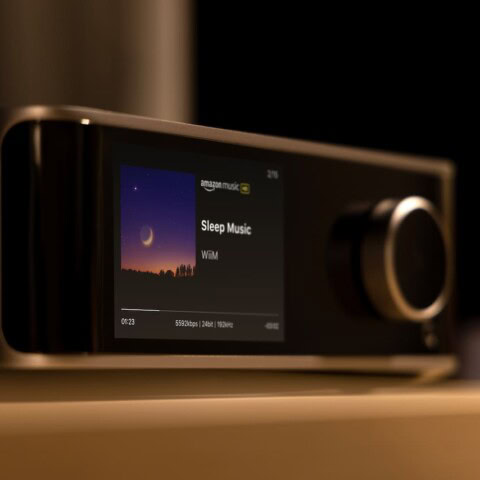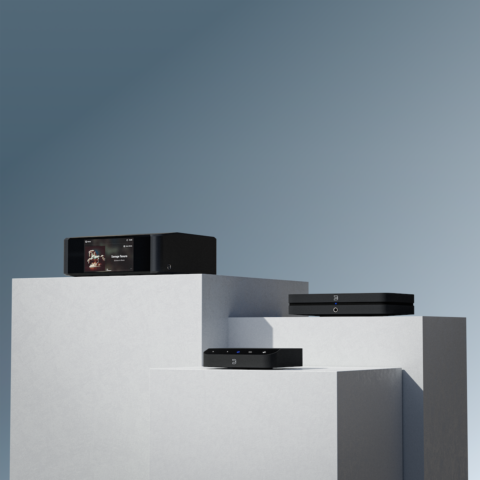$499
4.5 Stars
Here it is, folks: a highly detailed and hard working little DAC with a USB input for the 21st Century.
Firestone Audio’s Spitfire MkII is the latest external Digital to Analogue Converter (DAC) to make its way into my system. At $500, it’s a relatively inexpensive unit, but the $400-$600 price point is where the sharp value for money is to be had. It was reviewed alongside the Pro-Ject DAC Box FL (reviewed here), which has no USB support and runs a rare filterless architecture.
Features and Construction
The Spitfire MkII is also a “Cute Series” product, so it’s housed in the same rugged little aluminium case as the Fubar 2 USB DAC that I reviewed here back in early November. Unlike the Fubar 2, the Spitfire MkII supports USB as well as co-ax and optical digital inputs. The USB input is limited to 16bit/48khz but the digital inputs support formats up to 24bit/96kHz.
Like the Fubar 2, the Spitfire MkII comes neatly packaged (in a special Christmas box, no less) and includes 1.5m RCA interconnects and a USB cable. Power comes from a compact wall wart power supply. A subtle change from the Fubar 2 is the addition of a front mounted power switch, which is handy if you don’t like leaving the unit on all the time. It seemed to need no warm-up time, but as it won’t use much power just sitting there, I’d probably just leave it running.
Like the Zero DAC (reviewed here), in a nod to the tube rollers out there, the Spitfire’s op-amp is mounted in an 8 pin DIP socket to allow for op-amp rolling. If you’re a tweaker who doesn’t mind doing some research and taking a punt on some inexpensive op-amp chips, you’ve got a way to tailor the sound to your tastes. It may be a bit hit and miss compared to replacing some cheap generic Chinese tubes with high grade NOS Mullards in a valve amp, but at least the option is there for those who’re into fiddling with their gear.
Sound Quality
I slotted the Spitfire MkII into my system, which has undergone a major change recently with the addition of a StereoKnight Silverstone Balance transformer passive preamplifier (more information here). The sound of the system has been transformed and I’m hearing more detail than ever before, with my Marantz SA8260 SACD player seeming to be at a new peak of performance. With my ears tuned to a fine pitch by many hours of fevered listening, the DACs were under minute inspection.
Starting off with Aimee Mann’s Lost in Space, I found the Spitfire MkII (running co-ax from the Marantz) to be a sideways move, certainly not a downgrade from the Marantz. Aimee’s vocals were just as delightful coming from the Spitfire’s outputs; the presentation was slightly smoother and a tad richer but the detail levels were still sky high, and dynamics hadn’t suffered at all. If anything, the soundstaging had opened up, moving forward into the room without getting any wider. Some of the instruments on ‘Today’s the Day’ seemed to be laid well forward of the speaker plane, while the layered vocals on ‘High on Sunday 51’ were as clearly delineated as I could hope for from a $500 DAC – a really impressive performance.
Running back to back with Pro-Ject’s DAC Box FL filterless DAC, I moved to the Deconstructed compilation CD, which features mellow tunes from the likes of Bob Dylan, Radiohead, Paul Weller, Nick Cave and Lou Reed. Mazzy Star’s terrific ‘Fade Into You’ was borderline magical through the Spitfire – wide open and deeply involving with immense detail. The harmonics around the vocals were so open and clear that I felt as if I could physically see the edges of the recording studio. Ambient reality is the correct term, I believe – the ability to offer enough of an insight into a recording so as to allow the venue’s contribution to become more obvious. The Pro-Ject wasn’t able to clearly define the edge of the acoustic area, but offered an even smoother sound.
Playing something with more of an edge, I moved to Warren Zevon’s Preludes and John Lee Hooker’s The Best of John Lee Hooker. The Spitfire MkII laid out every blemish of these recordings, far more so than the Pro-Ject DAC Box FL, which made for a less ‘in your face’ sound. The tracks from the Spitfire were nonetheless still easily tolerated, because the result wasn’t harsh.
The USB input was put to the test with a series of lossless and 320kbps files stored on my MacBook Pro with iTunes as the music manager. The results were very good indeed, highly detailed and capable of portraying both delicate and aggressive music with aplomb. However, I did prefer the sound from the co-ax digital input. The USB seemed slightly more mechanical in terms of its musical flow and tonally, the balance was a tad leaner with less midrange warmth. The imaging was more precise through the USB, however.
It’s generally accepted that iTunes isn’t the best sounding ripping/playback platform so there may well be room for improvement here, but it is a very popular choice, and that’s why I stick with for my reviews. I will look at setting up a PC based digital solution using Exact Audio Copy to see if there is a noticeable difference over a USB connection.
Conclusion
The Spitfire MkII is a neat little product, offering a sophisticated sound that came close to the great results I get from my Marantz SACD player (which is a very tasty disc spinner). With two digital inputs and a USB input, it offers extra versatility over the USB-less Pro-Ject DAC Box FL, which has to be a big plus in the minds of many potential DAC buyers. This DAC is not a purpose built music server, but running from my MacBook Pro using an iPhone as a remote, it does a very good job indeed.
The overall sonics are tough to fault at the price, but there is stiff competition out there. Without running them side by side, it would be hard to tell but I’m fairly confident that the Zero DAC would have an edge over the Spitfire MkII, if only in terms of its dynamics, sheer joie de vivre and its superb USB performance. The Spitfire is smaller, neater and better built though, which may swing it for some – either would be a good choice for a budget DAC. ASHLEY KRAMER


















I wonder how a DAC can be considered ‘high fidelity’ in any sense of the word, when it has a frequency response of 40Hz to 15kHz.
Firestone Audio seem to list the Frequency Response for this DAC quite strangely:
(From 40Hz to 15kHz) : 40Hz +0.01dB, 15kHz -0.05dB
That’s a tight set of measurements in a specific range. The full range is:
Total Frequency Range: 10Hz – 25kHz : -1dB
So the DAC is only 1dB down at 10Hz and 25kHz.
Funnily enough, the December 2010 Hi-Fi World that I picked up this week mentions a number of DACs that are limited to 16kHZ and they’re certainly high fidelity (Chord DAC 64 for example). I’ll see if I can verify this…
If any of you guys can hear beyond 15khz or below 40hz let me know … Hi-Fi is all about LINEARITY, not shear bandwith. I’ve heard speakers with sharp roll-offs above 12khz that sound better than ones reaching 20khz. Let go of the numbers, and use your EARS !
Re: Duke – You’re darn right, I can hear 15kHz and above. Well, not much above that anymore… 16kHz are highly uncomfortable and loud, but 17kHz are already so faint that I have to concentrate on it. At 18kHz I hear nothing anymore, though I well remember hearing up to 20kHz as a kid. And there’s ‘hearing’ and ‘sensing’, too, which needs to be considered.
Re: AshK – Many thanks for the clarification!